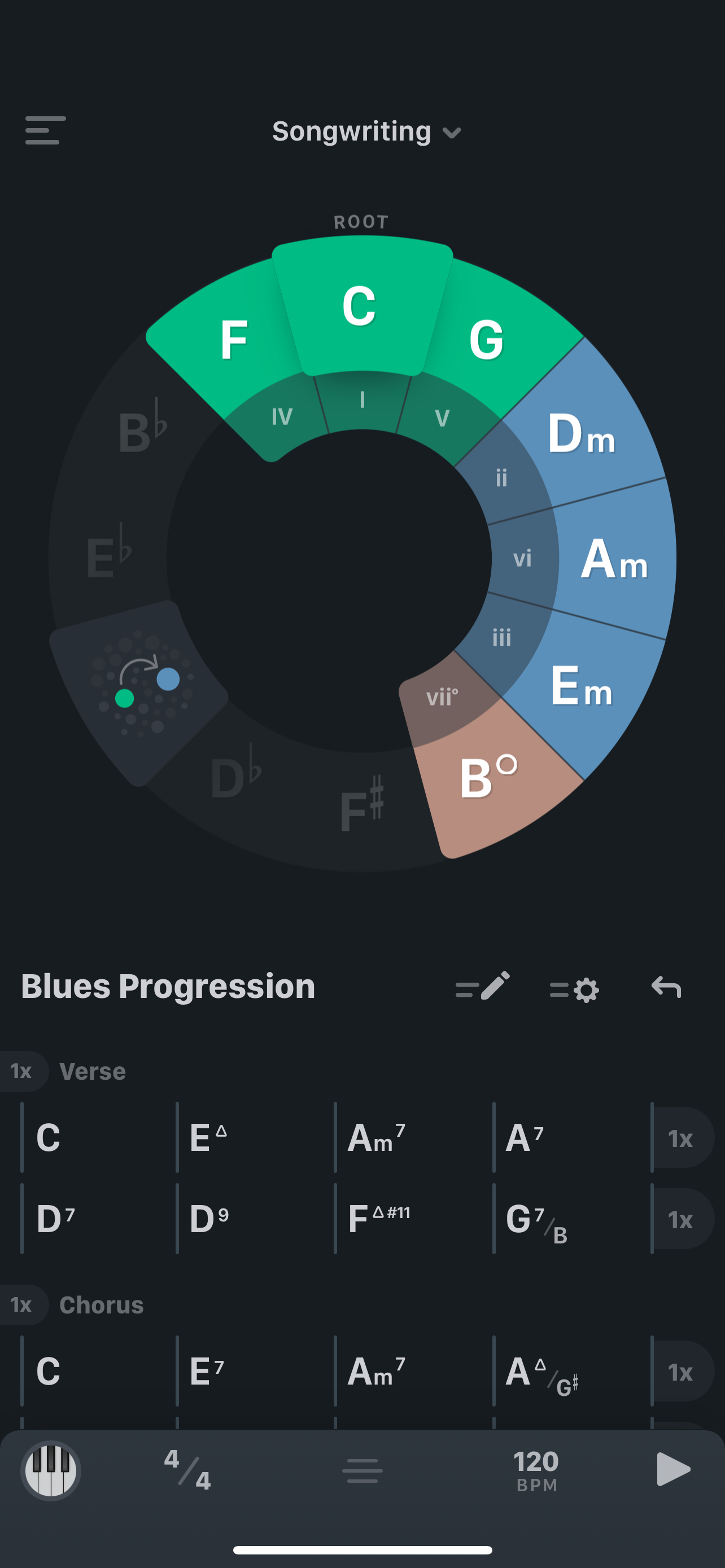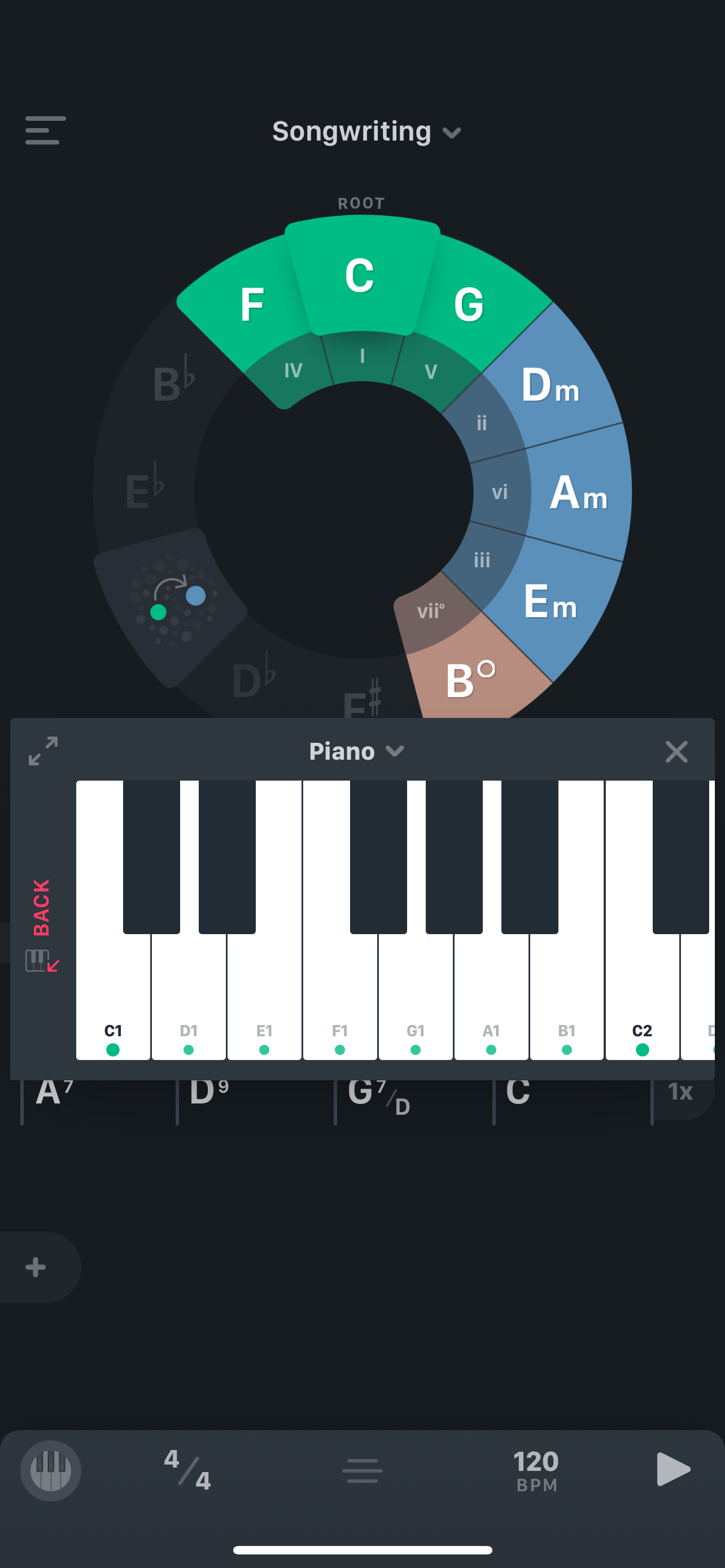Loopy Pro: Create music, your way.
What is Loopy Pro? — Loopy Pro is a powerful, flexible, and intuitive live looper, sampler, clip launcher and DAW for iPhone and iPad. At its core, it allows you to record and layer sounds in real-time to create complex musical arrangements. But it doesn’t stop there—Loopy Pro offers advanced tools to customize your workflow, build dynamic performance setups, and create a seamless connection between instruments, effects, and external gear.
Use it for live looping, sequencing, arranging, mixing, and much more. Whether you're a live performer, a producer, or just experimenting with sound, Loopy Pro helps you take control of your creative process.
Download on the App StoreLoopy Pro is your all-in-one musical toolkit. Try it for free today.


Comments
where is phrygian dominant? there certainly is a doric #11 on harmonic minor
phrygian dominant is that gipsy sounding one, right?
Ah, 5th mode of harmonic, of course. The flat 9th and 13th make it phrygian and has a major 3rd
It’s called harmonic for a reason..
TONALY.
Why? For me, the only time I care about music theory is when I want to test different chord arrangements.

Or find the key of a song. Which is where the in-built piano is awesome.

But I don't know all the names of chords. So, TONALY lets me visualise the theory, and I can borrow chords from different keys, and use it in the same progression.
Plus, it can export arrangements as sheet music, or MIDI for Garageband/Cubasis/Nanostudio 2 production.
And it works for the iPhone. And iPad. And Mac.
Phrygian dominant—is that C Db E F G Ab Bb? Or A natural?
The second I am guessing is: C D Eb F# G Ab Bb? Or A natural?
I think that if “diatonic” refers to notes in the scale, then any note in the scale is “diatonic”. I don’t understand the basis for labeling a scale as diatonic or not-diatonic. In my understanding, the scale itself defines which notes are diatonic by definition.
diatonic scales by their definition have no more than two semitones between notes, so any scale containing augmented second (3 semitones) is not diatonic.
also, circle of fifths does not work for such scales. moreover, 5th is avoid note for most of them.
I am no expert on this but I find the topic interesting and thought World's 2nd Best Geoshredder's definition of diatonic was right. So I fed chatgpt your answer and asked it to comment. It said the following:
The classic definition of a diatonic scale is a seven-note scale made up of five whole steps and two half steps, with the half steps maximally separated. This pattern can be generated by stacking six perfect fifths in sequence. By this strict definition, traditional diatonic scales avoid augmented seconds. However, in practice, scales like the harmonic minor, while not strictly diatonic, are widely used in Western music and function within the tonal system.
The circle of fifths is a tool for understanding key relationships and harmonic progressions. It applies to all scales, even those with augmented seconds. For example, the harmonic minor scale still relies on the dominant-tonic relationship, which the circle of fifths helps to explain.
Regarding the fifth, whether referring to the interval of a perfect fifth or the fifth degree of the scale, it is one of the most stable and harmonically important elements in most contexts. In scales such as the harmonic minor, the fifth degree plays a key role in forming the dominant chord and resolving to the tonic.
This topic is nuanced, and these distinctions might help clarify the relationships between different scales and theoretical frameworks. If there are other interpretations, they would be interesting to explore.
Does that sound right to you?
Interesting rule. I’m wondering where it comes from and what its utility is. The concept of “avoid notes” suggests a harmonic dissonance, but these “non-diatonic” scales are most often used in modal music without functional harmony.